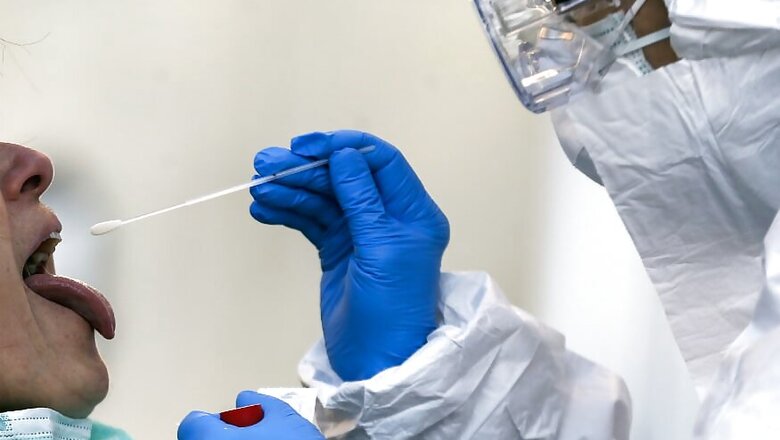
views
New Delhi: A virus is a single or double stranded nucleic acid surrounded by a shell of proteins. The microbe cannot reproduce by itself. It attaches itself to a living cell, takes over its control to multiply manifold. In the process, the virus damages or even kills the infected cell. The immunity system in the meantime kicks in on cue to combat foreign agents trying to damage healthy tissues.
There are primarily two ways to find out if a person has indeed been infected by the pathogen: the presence of virus in the body. Or detection of anti-bodies which the body may have developed to fight the foreign agent.
In the case of Covid-19, the core of the virus is a molecule called RNA or Ribo-nucleic acid.
Reverse Transcriptase-Polymerase Chain Reaction or RT-PCR is the most commonly used confirmatory test to identify Covid-19 cases. The test reads the presence of virus RNA in a throat or nasal swab to detect if a patient is infected with the pathogen.
Another process to test a Covid 19-positive patient is through what is called virus antigen test. This process identifies the virus protein enveloping the RNA.
Though both RT-PCR test and viral antigen test can be utilised for the early detection of the disease, the former is said to be more sensitive.
“RT-PCR test is more sensitive because in detecting the virus, the nucleic acid is amplified many times over to detect the presence of the microbe. Antigen tests measure only the load of virus protein that is there, although the detection signal can be amplified a bit,” says Dr Gagandeep Kang, executive director of the Transnational Health Science and Technology Institute, Faridabad.
But both tests are important in early detection of the disease and to reduce its spread as Covid-19 patients shed large amounts of pathogen in the first week of being exposed to the virus. In some cases, the patients have shown transmissibility even before the onset of clinical symptoms. Which means they are mobile and infecting others.
Between RT-PCR and antigen test, the former is the preferred method for the detection of the virus.
“You may miss a lot of patients if you use this test to detect at an early stage. If the patient is tested negative, they may be sent home and then they can spread the virus to other people,” says Leo Poon, Professor School of Public Health, Hong Kong University.
The second method to test for Covid-19 is by checking for the presence of anti-bodies in the blood sample of a patient. Also called serological test, this process takes lesser time than RT-PCR test. The Indian Council of Medical Research (ICMR) is already trying to procure 10 lac kits to commission large scale testing in Covid-19 hotspots which have reported cluster spread.
Serological test detects the presence of anti-bodies generated by the body’s immune system to fight the disease. But this process may trigger only a while after the body starts to fight back the virus.
“Serological test is likely to be positive after the immune system of the infected person has started to produce antibodies. That may take seven to nine days after exposure to the virus. The RT-PCR test, on the other hand, can detect the virus at an early stage of the infection, even just before symptoms start,” says Dr Kang.
Based on the outcome of the report, the infected patient may thus be discharged while he is still carrying viral load to infect others.
Since it takes lesser time to conduct serological tests, they are considered useful in assessing the spread of the disease, surveys and determining mathematical models to predict the impact of pathogen spread over a period of time.
Another important aspect of virus testing is the protocol to determine if the Covid-19 positive patient is said to have recovered completely from the disease. That is the case if two separate RT-PCR tests on two consecutive days show absence of virus in throat and nasal swabs.
But sometimes the patients who have recovered continue to shed virus detectible by PCR test. At times, this virus not be cultured indicating the pathogen is dead.
“So one of the questions right now is to resolve this question of infectivity because there is an urgency to be able to discharge the patients even before their PCR becomes negative. That is likely to be the case but there is still no guideline on how we can do that” says Prof Malik Peiris from Public School Health, Hong Kong University.













Comments
0 comment